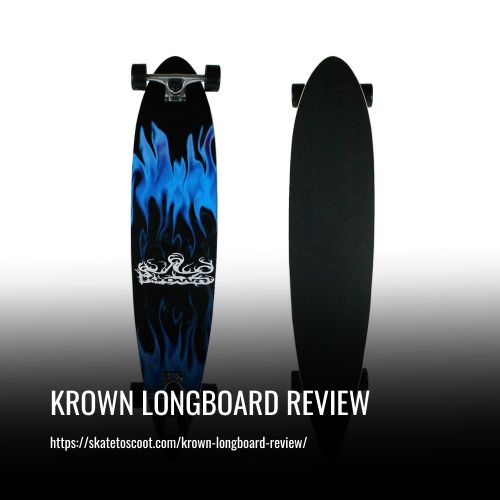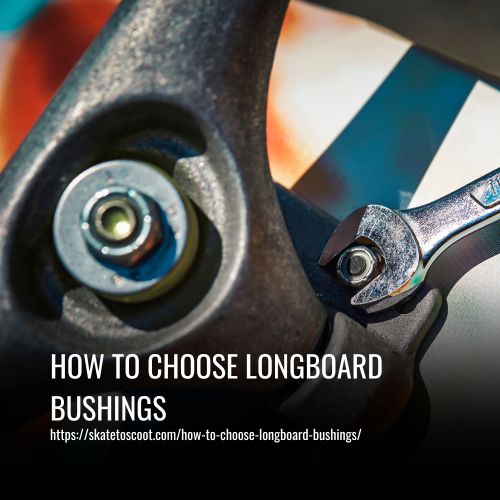As an Amazon Associate we earn from qualifying purchases.
Are you tired of spending a fortune on store-bought longboard decks? Do you want to try your hand at making your own custom deck? Well, you’re in luck! Making a longboard deck is not as difficult as you might think, and it allows you to unleash your creativity and build a board that is truly unique to you.
Longboarding has become increasingly popular in recent years, and more and more people are opting to make their own decks. Whether you’re a seasoned longboarder looking to customize your ride or a beginner wanting to try something new, making your own deck is a rewarding and fulfilling experience. Plus, it can save you a significant amount of money in the long run.

To make a longboard deck, you’ll need the following tools and supplies:
- 1/8th inch sheets of baltic birch plywood: Get these from your local wood store. Baltic birch is a popular choice as it is durable and provides good stability for longboarding.
- Wood glue: Choose a high-quality wood glue that can securely bond the layers of wood together. Avoid using cheap glue as it may result in a weaker deck.
- Foam brushes: These are useful for applying the wood glue evenly onto the layers of wood.
- Jigsaw, Bandsaw, or hand saw: These tools are necessary for cutting the plywood into the desired shape and size. If you’re on a budget or have limited space, you can opt for an affordable jigsaw.
- Orbital sander and pads, or sandpaper (60, 120, 240 grit): Use these to smooth out the edges and surfaces of the wooden deck for a refined finish. Sanding helps create a safer and more comfortable riding experience.
- Clamps: These are essential for holding the layers of wood together while the glue dries. Use enough clamps to ensure a tight bond between the layers.
- Urethane or water-based top coat: Applying a layer of polyurethane varnish or a water-based top coat protects the deck from moisture and gives it a glossy, finished look.
- X-acto knife or box knife: These blades are handy for trimming excess grip tape or making small adjustments to the deck’s shape.
- File: Use a file to smooth any rough edges or imperfections on the deck.
In addition to the tools, you’ll need other longboard supplies such as grip tape, wheels, bearings, trucks, and screws or bolts to assemble the complete board. Optional items include wood stain to add a touch of color and pattern paper for creating a template for the deck shape.
How to Make a Longboard Deck: Step-by-Step Guide for Beginners
Longboarding is a popular sport that combines the thrill of skateboarding with the smoothness and stability of a longer board. While there are plenty of longboard options available in skate shops, making your own longboard deck can be a rewarding and cost-effective alternative.
In this step-by-step guide, we will walk you through the process of creating your very own longboard deck. With the right materials, tools, and a little bit of patience, you’ll soon be cruising on your self-crafted board. So let’s dive in and learn how to make a longboard deck from scratch.
1. Gather your supplies
To make a longboard deck, you will need a few essential supplies. Here’s what you’ll need to gather before you start:
- Pencil, measuring tape or ruler, and a wrench: These will come in handy for measuring and marking the dimensions of your longboard.
- Two pieces of birch plywood: It’s best to use one thick and one thin piece of plywood to achieve the desired flexibility and durability for your longboard deck.
- Wood glue: A strong and reliable wood glue will be necessary to bond the different layers of wood together.
- Scissors and sandpaper: Scissors will be used to cut the grip tape to fit the deck, while sandpaper will help smooth out and shape the edges of the board.
- Polyurethane: Applying a layer of polyurethane varnish will protect the wood from moisture and give it a glossy finish.
- Grip tape: This adhesive material is applied to the top side of the longboard deck to provide traction and prevent your feet from slipping off.
- Drill and Exacto knife: The drill will be used to create holes for attaching the trucks, while an Exacto knife is useful for trimming excess grip tape.
It’s worth mentioning that depending on your design preferences, additional supplies like clamps, paper for template creation, paint, paintbrushes, and painter’s tape may be required. If there are no local skate shops or if you are on a tight budget, you can always consider ordering your longboard parts online. Now that you have gathered your supplies, you’re ready to move on to the next steps of making your own longboard deck.
2. Laminate the wood
To laminate the wood for your longboard deck, you will need the following materials: two pieces of birch plywood, wood glue, clamps, and some weights. Here’s a step-by-step guide on how to laminate the wood:
- Prepare the wood: Start by ensuring that the two pieces of birch plywood are properly cut to your desired dimensions. In this case, we have two pieces measuring 41″ x 10″.
- Apply wood glue: Using an old paintbrush, spread a layer of wood glue evenly across the entire bottom layer of one piece of plywood. Make sure to apply the glue evenly and cover the entire surface.
- Sandwich the plywood: Carefully place the second piece of plywood on top of the glued layer, ensuring that the edges align perfectly.
- Clamp the wood: Use clamps to secure the two pieces of plywood together. Place the clamps strategically around the edges to ensure a tight bond.
- Apply weight: To ensure a strong bond, place some weights on top of the clamped plywood. The weights will help to evenly distribute pressure and aid in the lamination process.
- Let it set overnight: Leave the clamped and weighted wood overnight to allow the wood glue to completely dry and bond the two plywood pieces together.
By following these steps and allowing sufficient drying time, you will successfully laminate the two pieces of plywood, creating a sturdy and durable longboard deck.
3. Design your deck
To design your longboard deck, start by creating a template based on your desired shape and style of riding. You can either trace the deck of a skateboard you already own or draw your own design on a sheet of paper.
If you prefer a freestyle riding style, consider a shape that allows for maneuverability and tricks. Once you have a template, trace it onto the laminated wood sheets.
Ensure that the dimensions and edges align properly. Use a box cutter or appropriate woodworking tools to cut along the traced lines.
If you want to add some personal flair to your deck, consider using black spray paint to create designs or patterns. This can also help protect the deck from scratches.
Once your design is finalized, you can move on to the next step of assembling your longboard deck.
4. Cut out the deck
Now that you have your longboard template traced onto the laminated wood sheets, it’s time to cut out the deck. This step requires some precision and power tools, so if you are not experienced or don’t have access to the necessary tools, consider taking it to your local hardware store.
If you prefer to cut it yourself, make sure to use appropriate woodworking tools like a saw or box cutter. However, if you are not confident in your skills, it’s best to seek help from someone who has experience with these tools.
Another option is to have your deck cut out at a hardware store. Simon and his friends discovered that they could have their longboard decks cut out for around $1 per cut. This is a cost-effective and convenient solution for those who don’t have access to the tools or the expertise.
By entrusting this step to professionals or experienced individuals, you can ensure that the deck is cut accurately and according to your template. This will help to maintain the integrity of the design and ensure proper functionality when it’s time to hit the streets.
Remember, safety comes first when using power tools. Always follow the instructions and take necessary precautions to prevent accidents.
5. Sand the edges
After cutting out your longboard deck, the next step is to sand the edges. This will help to smooth out any rough spots and ensure a clean finish.
Start by inspecting the edges of your deck for any imperfections or sharp edges. Use sandpaper with medium grit to sand away any rough areas along the edges. Be sure to sand in a smooth, even motion to create a uniform edge.
Once you have sanded down the edges, go over the flat surfaces of the deck to smooth out any remaining rough spots. Use a finer grit sandpaper to achieve a smooth finish. Sand in the direction of the wood grain for the best results.
Regularly check the deck’s edges and surfaces to ensure that they are smooth and free from any roughness. It’s important to ensure that the edges are not sharp or jagged, as this could cause injury while riding.
6. Seal the wood
After ensuring that your longboard deck is smooth and free from imperfections, the next step is to seal the wood to protect it and give it a nice finish. Start by choosing a suitable sealer for your deck. We recommend using a water-based polyurethane sealer in a semi-gloss finish for its durability and warm glow.
To apply the sealer, start by stirring it well to ensure that it’s properly mixed. Use a clean brush or a foam applicator to evenly coat the entire surface of the deck. Apply the sealer in thin, even strokes, working with the wood grain for a consistent finish.
Allow the first coat of sealer to dry completely before applying any additional coats. This will typically take a few hours, but follow the manufacturer’s instructions for specific drying times. If you plan on adding designs to your deck, it’s recommended to start with only one coat of sealer.
After the first coat has dried, carefully inspect the deck for any missed spots or uneven areas. If necessary, lightly sand those areas with fine grit sandpaper, then apply additional coats of sealer as desired. Most decks will require two to three coats for optimal protection.
7. Add your design
Once you have applied the necessary coats of sealer to your longboard deck and it has dried completely, you can move on to add your unique design.
To add your design, first, gather your materials. You will need your chosen design template, paint, brushes, and any other supplies you may need to create your desired design.
Using your template, trace the design onto the deck using a pencil or chalk. This will serve as a guide for your painting.
Next, start painting your design using acrylic paint or any other suitable paint of your choice. Take your time and use thin, even layers of paint to prevent drips and ensure a smooth finish.
Allow each layer of paint to dry before adding additional layers or details to your design. This will help prevent smudging or mixing of colors.
Once you are satisfied with your design, let it dry completely.
To protect and preserve your artwork, apply additional coats of water-based polyurethane in a semi-gloss finish. This will add a protective layer and enhance the durability and longevity of your design.
8. Apply the grip tape
To apply the grip tape to your longboard deck, start by laying the grip tape rough side down on a flat surface. Make sure to choose a grip tape that matches your preferred color and roughness level.
Next, trace the shape of your longboard deck onto the backing of the grip tape. This will serve as a guide for cutting the grip tape to the correct size.
If you prefer to have some parts of your longboard deck exposed, as Simon did with his trucks already mounted, apply the grip tape carefully around those areas.
However, if you want to cover the entire surface of your longboard deck for maximum grip like Elliot did, cover the entire deck with the grip tape.
Remember that cutting grip tape can be challenging because it is similar to cutting through sandpaper. So, use scissors that you don’t mind potentially damaging for this step.
Once you have traced the shape and cut the grip tape to the correct size, carefully peel off the backing and apply the grip tape to your longboard deck. Press firmly to ensure it adheres properly.
Finally, use a skateboard edge or the edge of a credit card to smooth out any air bubbles and ensure the grip tape is securely attached to the deck.
9. Apply the trucks and wheels
Now that you have drilled the screw holes on your longboard deck, it’s time to attach the trucks and wheels. Place the trucks onto each end of the board, aligning them with the pre-drilled holes. Use a pencil to mark the exact spots where you will be drilling the screws.
Be careful and take your time while drilling. It is important to ensure that the holes align perfectly with the truck mounting holes. If you are unsure about drilling or don’t own a drill, you can also visit a skate shop and have them assemble your board for you if you purchase the parts from them.
Once the screw holes are ready, use a screwdriver to attach the trucks to the deck. Tighten each screw a little bit at a time until you have secured all the screws. It’s important to tighten them evenly to keep the trucks aligned properly.
After the trucks are securely attached, it’s time to put the wheels on. This might require a bit of muscle, but with some effort, you’ll be all set. Place the wheels onto the axle of the trucks and push them until they are snugly in place. Make sure they spin freely and do not wobble.
Congratulations! Your longboard deck is now complete with the trucks and wheels properly installed. Take a moment to admire your work and get ready for an amazing ride. Remember to always wear protective gear and have fun safely on your newly assembled longboard.
10. Get ready to ride!
Get ready to ride your homemade longboard! After successfully attaching the trucks and wheels, your board is nearly complete. Put on your helmet for safety and get ready to hit the streets.
Before you hop on your longboard, make sure the trucks are securely attached to the deck. Use a screwdriver to tighten all the screws evenly until they are snug. This will keep your trucks aligned properly and ensure a stable ride.
Once the trucks are secured, it’s time to put the wheels on. Place each wheel onto the axle of the trucks and push them until they are snugly in place. Give them a spin to make sure they spin freely and don’t wobble. This will ensure a smooth ride on your longboard.
Now, with your trucks and wheels properly attached, you’re ready to hit the road. Put on your helmet, grab your longboard, and enjoy the thrill of riding your very own creation. Whether you’re cruising down the streets or tackling some hills, your homemade longboard will provide hours of enjoyment.
Remember, this DIY longboard is a low-budget option, perfect for those working with limited funds. The quality and cost of your board may vary depending on your personal budget and the supplies you purchase. So, get out there, have fun, and make the most of your wise investment in a homemade longboard.
FAQs
The most common type of wood used for longboard decks is maple. Maple boards are known for their durability and stiffness, making them perfect for capturing speed and carving tight turns.
A standard longboard deck typically consists of 5 to 10 layers, or “plys,” of maple. This layering technique provides strength and flexibility, creating a sturdy board that can withstand the demands of downhill riding and tricks.
Yes, mixing lighter wood with maple ply is a common practice in longboard making. This helps to reduce excessive weight while maintaining the necessary stability and strength.
While maple is the go-to option, other woods like Baltic birch and bamboo can also be used in longboard construction. These materials offer unique characteristics and can be used to create lighter or more flexible boards.
To make a longboard deck, you will need woodworking tools such as a table saw, jigsaw, or band saw to cut the pieces of wood to shape. Additionally, clamps, wood glue, and sandpaper will be essential in the assembly and finishing processes.
Conclusion:
Making your own longboard deck is not only a rewarding and fulfilling experience, but it also allows you to customize your ride to perfection. With a bit of patience, creativity, and the right tools, you can create a deck that not only looks amazing but performs flawlessly.
So, why settle for a generic board when you can have one that is uniquely yours? Get ready to ride in style and make your mark on the longboarding world!
Amazon and the Amazon logo are trademarks of Amazon.com, Inc, or its affiliates.



